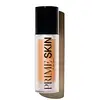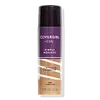What's inside
What's inside
 Key Ingredients
Key Ingredients

 Benefits
Benefits

 Concerns
Concerns

 Ingredients Side-by-side
Ingredients Side-by-side

Water
Skin ConditioningCyclopentasiloxane
EmollientButylene Glycol
HumectantPhenyl Trimethicone
Skin ConditioningIsododecane
EmollientPEG-10 Dimethicone
Skin ConditioningAluminum Hydroxide
EmollientStearic Acid
CleansingTocopherol
AntioxidantTocopheryl Acetate
AntioxidantTetrahexyldecyl Ascorbate
AntioxidantRetinyl Palmitate
Skin ConditioningBHT
AntioxidantGlycyrrhiza Glabra Root Extract
BleachingNylon-6/12
AbsorbentOlive Glycerides
EmulsifyingCeramide NP
Skin ConditioningNylon-12
Sodium Hyaluronate
HumectantBis-PEG/PPG-14/14 Dimethicone
EmollientMethicone
EmollientBoron Nitride
AbsorbentDisteardimonium Hectorite
StabilisingTriethoxycaprylylsilane
Sodium Chloride
MaskingSodium Dehydroacetate
PreservativeDisodium EDTA
Hexylene Glycol
EmulsifyingCaprylyl Glycol
EmollientPhenoxyethanol
PreservativeTitanium Dioxide 5%
Cosmetic ColorantEthylhexyl Methoxycinnamate 7.5%
UV AbsorberWater, Cyclopentasiloxane, Butylene Glycol, Phenyl Trimethicone, Isododecane, PEG-10 Dimethicone, Aluminum Hydroxide, Stearic Acid, Tocopherol, Tocopheryl Acetate, Tetrahexyldecyl Ascorbate, Retinyl Palmitate, BHT, Glycyrrhiza Glabra Root Extract, Nylon-6/12, Olive Glycerides, Ceramide NP, Nylon-12, Sodium Hyaluronate, Bis-PEG/PPG-14/14 Dimethicone, Methicone, Boron Nitride, Disteardimonium Hectorite, Triethoxycaprylylsilane, Sodium Chloride, Sodium Dehydroacetate, Disodium EDTA, Hexylene Glycol, Caprylyl Glycol, Phenoxyethanol, Titanium Dioxide 5%, Ethylhexyl Methoxycinnamate 7.5%
Cyclopentasiloxane
EmollientWater
Skin ConditioningGlycerin
HumectantDimethicone Crosspolymer
Emulsion StabilisingSodium Chloride
MaskingAcetyl Glucosamine
Skin ConditioningDiethylhexyl Carbonate
EmollientNiacinamide
SmoothingEthylhexyl Methoxycinnamate
UV AbsorberTalc
AbrasivePEG/PPG-18/18 Dimethicone
EmulsifyingPanthenol
Skin ConditioningPalmitoyl Pentapeptide-4
Skin ConditioningTocopheryl Acetate
AntioxidantAllantoin
Skin ConditioningMethicone
EmollientAluminum Hydroxide
EmollientBenzyl Alcohol
PerfumingCamellia Sinensis Leaf Extract
AntimicrobialPEG-10 Dimethicone Crosspolymer
StabilisingMethylparaben
PreservativeEthylparaben
PreservativePropylparaben
PreservativeDisodium EDTA
Parfum
MaskingPEG-100 Stearate
Titanium Dioxide
Cosmetic ColorantIron Oxides
Cyclopentasiloxane, Water, Glycerin, Dimethicone Crosspolymer, Sodium Chloride, Acetyl Glucosamine, Diethylhexyl Carbonate, Niacinamide, Ethylhexyl Methoxycinnamate, Talc, PEG/PPG-18/18 Dimethicone, Panthenol, Palmitoyl Pentapeptide-4, Tocopheryl Acetate, Allantoin, Methicone, Aluminum Hydroxide, Benzyl Alcohol, Camellia Sinensis Leaf Extract, PEG-10 Dimethicone Crosspolymer, Methylparaben, Ethylparaben, Propylparaben, Disodium EDTA, Parfum, PEG-100 Stearate, Titanium Dioxide, Iron Oxides
 Reviews
Reviews

Ingredients Explained
These ingredients are found in both products.
Ingredients higher up in an ingredient list are typically present in a larger amount.
Aluminum Hydroxide is a form of aluminum. It can be naturally found in nature as the mineral gibbsite. In cosmetics, Aluminum Hydroxide is used as a colorant, pH adjuster, and absorbent.
As a colorant, Aluminum Hydroxide may add opacity, or reduce the transparency. Aluminum hydroxide is contains both basic and acidic properties.
According to manufacturers, this ingredient is an emollient and humectant. This means it helps hydrate the skin.
In medicine, this ingredient is used to help relieve heartburn and help heal ulcers.
There is currently no credible scientific evidence linking aluminum hydroxide in cosmetics to increased cancer risk.
Major health organizations allow the use of aluminum hydroxide in personal care products and have not flagged it as a carcinogenic risk at typical usage levels.
Learn more about Aluminum HydroxideCyclopentasiloxane, or D5, is a silicone used to improve texture of products and trap moisture.
D5 is considered lightweight and volatile. Volatile means it evaporates quickly after application. Once evaporated, D5 leaves a thin barrier that helps keep skin hydrated.
It is also an emollient. Emollients help soften the skin and prevent water loss. Silicones create a silky texture in products. D5 helps other ingredients become more spreadable.
Studies show D5 is safe to use in skincare products. We recommend speaking with a skincare professional if you have concerns.
Learn more about CyclopentasiloxaneDisodium EDTA plays a role in making products more stable by aiding other preservatives.
It is a chelating agent, meaning it neutralizes metal ions that may be found in a product.
Disodium EDTA is a salt of edetic acid and is found to be safe in cosmetic ingredients.
Learn more about Disodium EDTAEthylhexyl Methoxycinnamate is an organic compound that provides UVB protection. It often goes by the more common name of octinoxate. It is created from methoxycinnamic acid and 2-ethylhexanol.
Ethylhexyl Methoxycinnamate absorbs UVB rays with wavelengths between 280-320 nm. UV absorbers protect your skin by using chemical reactions to convert UV rays into heat and energy.
UVB (290-320 nm) rays emit more energy than UVA rays. They are capable of damaging DNA, causing sunburns and are thought to be linked to skin cancer.
The state of Hawaii has banned sunscreens containing octinoxate due to its potential impact on coral reefs. More research is needed to bridge gaps in this research. The European Union allows higher levels of octinoxate in sunscreens than the US and Australia.
Ethylhexyl Methoxycinnamate is oil soluble. It is not stable and may lose efficacy when exposed to sunlight.
Learn more about Ethylhexyl MethoxycinnamateMethicone is a type of silicone and is a simpler form of dimethicone.
Silicones are used to enhance the texture of products and have emollient properties. Methicone is used to give products a silky texture and improves spreadability.
Chances are, you eat sodium chloride every day. Sodium Chloride is also known as table salt.
This ingredient has many purposes in skincare: thickener, emulsifier, and exfoliator.
You'll most likely find this ingredient in cleansers where it is used to create a gel-like texture. As an emulsifier, it also prevents ingredients from separating.
There is much debate on whether this ingredient is comedogenic. The short answer - comedogenic ratings don't tell the whole story. Learn more about comegodenic ratings here.
The concensus about this ingredient causing acne seems to be divided. Research is needed to understand if this ingredient does cause acne.
Scrubs may use salt as the primary exfoliating ingredient.
Learn more about Sodium ChlorideTitanium dioxide is a mineral UV filter widely used in sunscreens and cosmetics.
It is one of only two UV filters officially classified as “mineral” by regulatory agencies, the other being zinc oxide.
Titanium dioxide provides broad-spectrum protection mostly in the UVB and UVAII range, with some protection in the UVAI range.
While its UVA protection isn’t as strong as zinc oxide’s, the difference is minor.
A common myth is that mineral UV filters reflect UV light. However, modern research shows titanium dioxide absorbs UV radiation like chemical filters (~95% absorption & 5% reflection).
Thanks to its non-irritating nature, titanium dioxide is suitable for sensitive, acne-prone, or redness-prone skin. It is unlikely to cause "eye sting" like other sunscreen ingredients.
A major drawback of this ingredient is its white cast and thick texture. This is why mineral sunscreens often leave a white cast and are less cosmetically elegant than chemical/hybrid sunscreens.
To improve white cast and spreadability, micronized or nano-sized titanium dioxide is often used.
There are ongoing concerns surrounding nano-titanium oxide's impact on marine ecosystems.
There is no conclusive evidence that any form of titanium oxide (or any other sunscreen ingredients) will cause harm to marine ecosystems or coral reefs. The science is still developing but many consumers are keeping a close eye on this issue.
Please note, many destinations have reef-safety sunscreen rules. For instance, the U.S. Virgin Islands advises all visitors to use non-nano mineral sunscreens.
Nano mineral sunscreens once raised safety concerns about absorption into skin.
Extensive research has shown that they do not penetrate healthy or damaged skin; they remain safely on the surface and the top layer of dead skin (stratum corneum).
You'll likely find titanium dioxide bundled with alumina, silica, or dimethicone. These ingredients help make titanium dioxide highly photostable; this prevents it from interacting with other formula components under UV light.
Learn more about Titanium DioxideTocopheryl Acetate is AKA Vitamin E. It is an antioxidant and protects your skin from free radicals. Free radicals damage the skin by breaking down collagen.
One study found using Tocopheryl Acetate with Vitamin C decreased the number of sunburned cells.
Tocopheryl Acetate is commonly found in both skincare and dietary supplements.
Learn more about Tocopheryl AcetateWater. It's the most common cosmetic ingredient of all. You'll usually see it at the top of ingredient lists, meaning that it makes up the largest part of the product.
So why is it so popular? Water most often acts as a solvent - this means that it helps dissolve other ingredients into the formulation.
You'll also recognize water as that liquid we all need to stay alive. If you see this, drink a glass of water. Stay hydrated!
Learn more about Water